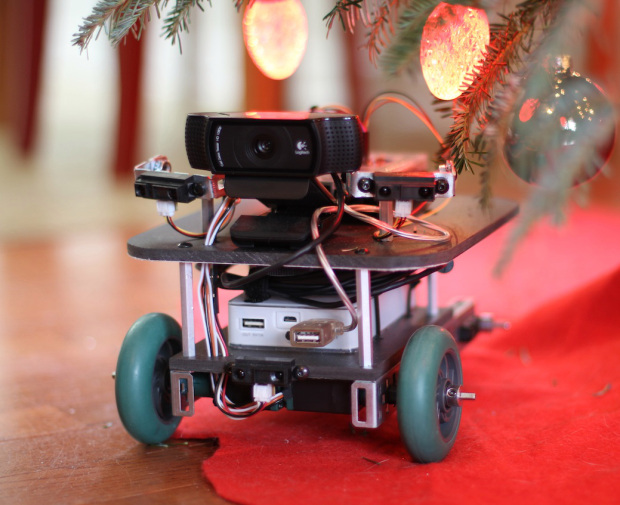
The CheerBot is a robot that roams the house and looks for certain colors using its camera. When it finds one of the colors I’ve told it to seek, it changes the color of the lights on my Christmas tree to match. It also submits the color to the Cheerlights service, which synchronizes the color of participating light displays around the world. It’s a complicated setup, but I’ll walk you through the basics. Most folks will find plenty of opportunities to learn with this project. I know I did.
To summarize the build process, you need to make a robot that can drive around without bumping into things, and then put a camera on it with code analyzing the video and tweeting when certain colors are found. As with most projects, there are near infinite ways to go about it. I’ll give you guidance on one way, but I challenge you to learn new things and make the project your own.





